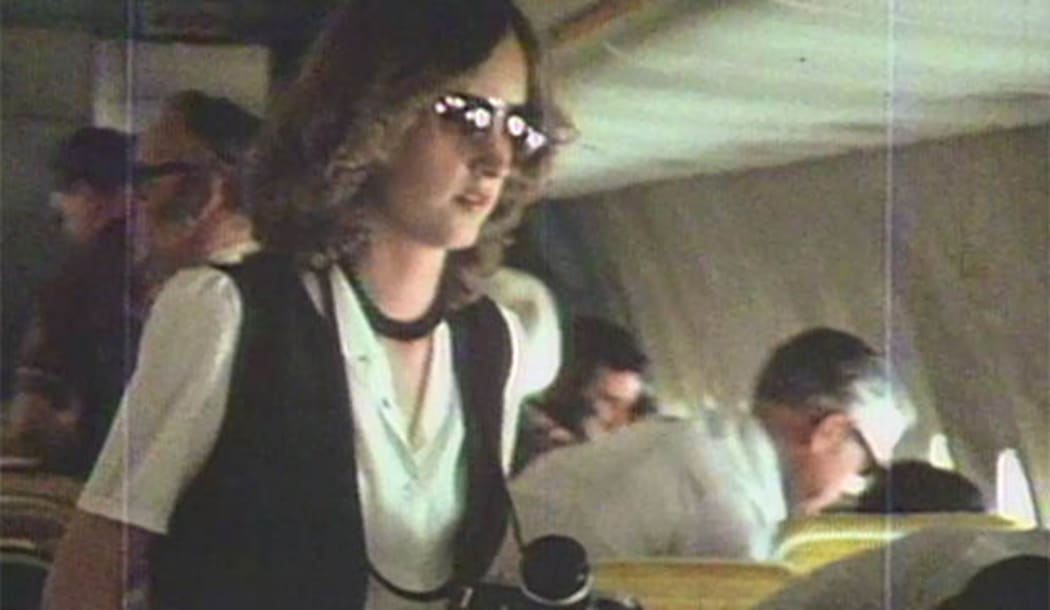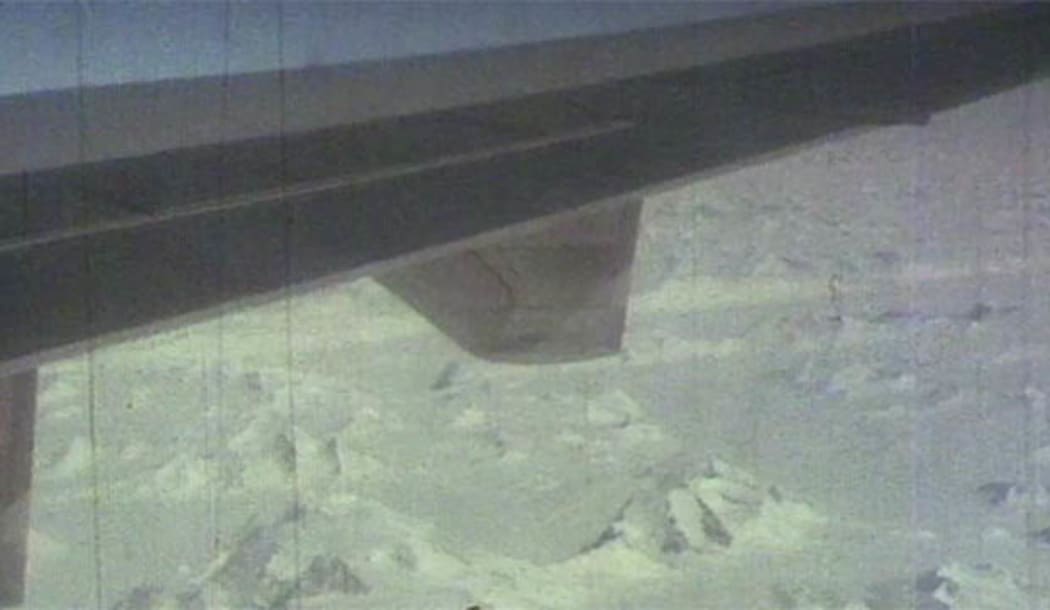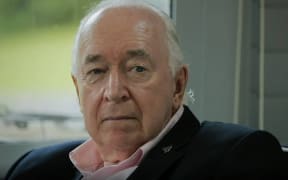Sarah Myles was shocked to see the decades-old footage of her grandfather on board the Air NZ flight, but says ultimately it actually helped the family grieve.
Warning: the content of this video may be upsetting to some people
This story is part of White Silence, a six-part podcast series from Stuff and RNZ to mark the 40th anniversary of the Erebus disaster. You can listen to White Silence on RNZ, Stuff, or via Apple Podcasts, Spotify, Stitcher, or any other app using the RSS feed.
The film shows passengers happy and relaxed. Drinking, taking photos and peering out at the ice below.
It was on a film shot by a passenger aboard Air New Zealand flight TE901 on November 28, 1979, not long before the aircraft crashed into the slopes of Mt Erebus in Antarctica, killing all 257 people on board.
Among the dead was Myles' grandfather, Frank Christmas.

Frank Christmas takes his seat as Air New Zealand flight TE901 flies over Antarctica. Photo: 60 Minutes / Nine
The footage was first broadcast on Australia's 60 Minutes programme in 1982 and has been screened a handful of times since.
It shows passengers happy and relaxed. Drinking, taking photos and peering out at the ice below.
Myles saw it on a TV documentary about 15 years ago. Suddenly, her grandfather walked into the frame.
"It was a surprise," she said.
"Like you instantly go back into this place of trauma. Oh my God, how's Mum going to react? How's Nana going to react? We couldn't prepare ourselves for it because he was just there on the screen."
Myles' relationship to the footage has since changed and she has written a book, Towards the Mountain, about her grandfather and the Erebus disaster. About how controversy in the aftermath of the crash made it difficult for her family to grieve.

The film shows passengers happy and relaxed. Drinking, taking photos and peering out at the ice below. Photo: 60 Minutes / Nine
Myles said although it was a shock to see the film, ultimately the sight of her grandfather in it actually helped. The family had long been troubled that they hadn't been able to view his body when it was recovered.
"So for 30-odd years before that footage even came out on New Zealand television, it was almost a question of, 'Well is he really dead? Was he really on the flight?'
"Seeing that photo for us of Frank was important because it showed us that he was actually, really, truly, dead. He was dead. He was on the flight. This did happen to him and it was the proof that we needed. That sounds very strange because he obviously didn't come home, but there was no closure or end point to that.
"I can see it as a real blessing...not everyone got footage of their loved one or got to see their loved one."

The footage was filmed by a passenger aboard aboard Air New Zealand flight TE901 Photo: 60 Minutes / Nine
Seeing Frank Christmas in the footage helped Myles and her family, but it will not be for everyone.
One part shot out of a window gave a clue that it was filmed shortly before the crash.
"The altitude is not high," aviation historian Richard Waugh said.
"It's probably in the last five to 10 minutes before impact, so if you don't know what you're about to see it's quite jarring...For some people I could see it as revealing the excitement and the joy of a scenic flight and they're all thrilled about it. For others it could be quite heart-wrenching...That's the range of emotions you get with these hundreds of Erebus families."
Stuff has chosen to show the footage and still photos here to help re-focus the story of the Erebus disaster onto the victims.
Over the last 40 years, Erebus has been dogged by controversy. That left many families of the victims feeling marginalised and voiceless. Only now are there plans to build a national memorial.
Waugh, who is closely involved in that, said he sensed that attention was finally shifting back to the 257 victims and their families.
"I don't think New Zealand as a nation at that time sort of knew quite how to react. I think we've learned so much with regards to the [Canterbury earthquakes] and Pike River [mine disaster] that the pastoral priority of the victims and their families was sort of lost sight of [after Erebus] and that was a terrible thing."
Kathryn Carter's father was Captain Jim Collins, the pilot of flight TE901 that day.
He was later blamed for the crash. The extra trauma of that made it doubly hard for the family to grieve. Seeing images from the flight itself was the closest people could get to the reality of what happened to the victims that day, and their loved ones afterwards, Carter said.
"We've all been psychologically through quite a lot of trauma and I think the evidence of that should be shown publicly so that people can understand what it means to have suffered what we've suffered."
Carter also believed the footage would help focus attention on families and those who were lost.
You can listen to White Silence on RNZ, Stuff, or via Apple Podcasts, Spotify, Stitcher, or any other app using the RSS feed.



